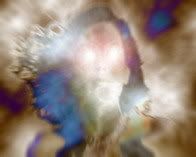A seven-day-old stump-tailed macaque baby - doesn't the tiny hand look like that of an adult human?

Pygmy marmoset females have two litters each year and give birth to twins 70% of the time. For the first two weeks when the mortality rate is highest, pygmy marmoset babies will be constantly carried by the mother, but after that time, raising offspring is a communal affair. The pygmy marmoset (Cebuella pygmaea) is one of the world's smallest monkeys - hence it is also called the dwarf monkey - and is a native of the South American rainforest.
They asked for one finger and then took the whole hand - baby marmosets:

Beaver babies are born in the spring and stay with their parents for two years. Yearlings often act as babysitters for a new litter. Beavers are natives of North America and Eurasia and are the world's second largest rodent, with adult beavers sometimes weighing up to 25 kg (55 lb). They are known for building dams, canals and elaborately constructed homes for themselves. Might this be because they mate for life?
Who are you calling busy? I'm just having a snack%u2026

Baby badgers are born blind and with only a thin coat of fur. Litters consist of one to five animals whose eyes will open after four to six weeks. Mothers nurse their young until they are two or three months old and the babies leave the den when they are five or six weeks old. Badgers are easily identified by their distinct black-and-white face stripes. Fierce animals, they will defend themselves and their families but can also run at a speed of up to 30 km/h for short distances.
I'm a handful - a baby badger:

This baby bat will be with its mother for a long time as bats nurse their children - usually one per litter - until they have grown to almost adult size. Young bats cannot fend for themselves and find food on their own until their wings have reached adult proportions. For some bat species, that means a dependency of six to eight weeks; for larger ones, up to four months. Did you know that bats can live over 20 years?
Baby bat in sheep's clothing?

This newborn aye-aye not only has a funny name and a weird look; no, it also belongs to an animal category that is called the "wet nosers" (strepsirrhine). Aye-ayes (Daubentonia madagascariensis) are natives of Madagascar and combine rodent-like teeth, a raccoon-like face and a body like a monkey to make one unusual little primate. Aye-aye babies are weaned only after seven months and stay with the mother for two years. Like bats, aye-ayes also live for more than 20 years.
Aye-aye baby:

Hedgehogs are born blind and without quills, which are just beneath the skin and easily visible just hours after birth. They can be found throughout Europe, Asia and Africa and have been introduced in Australia, New Zealand and North America. As one of the first mammals, hedgehogs have been around for 15 million years!
See no evil, hear no evil, speak no evil - three white hedgehogs:

Newborn moles might look tiny and helpless when they are born - weighing only around 5 g - but they actually mature in one month. They live in their mother's nest and tunnel system until they are weaned and old enough to dig their own tunnels.
Digging it - baby mole:

The platypus is one of the few mammals that lay eggs instead of giving birth to live young. Newly hatched platypus babies are blind and hairless and feed on their mother's milk, which is released through pores in her skin. The males take no part in caring for their young, which live in the mother's burrow until they are four months old. Platypus are natives of eastern Australia and Tasmania and the only representatives of the Ornithorhynchidae family. When first discovered in 1798, the scientists who received a sketch of this new animal - that looked like a cross between a duck, a beaver and otter - thought it was a hoax.
Platypus twins hatched on October 3, 2007 at the Healesville Sanctuary in Australia:

Like the platypus, the echidna belongs to one of the few mammal species that lays eggs instead of giving birth to live young. Its young, called a puggle, also sucks the mother's milk from the pores of two milk patches. The puggle remains in the mother's pouch for 45-55 days but is fully weaned after only seven months. Though they are also called spiny anteaters, echidnas are not related to anteaters.
Where did it go? It was just in front of my nose%u2026

Newborn kangaroos are blind, hairless and tiny. The kangaroo baby pictured below must be more than 190 days old because that's when the "joey" leaves its mother's pouch for the first time; leaving for the last time after 235 days. Kangaroos shared the platypus' destiny when first discovered: people "back home" just weren't ready to believe that an animal with a face like a deer and a long tail that stood upright and that hopped like a frog could exist. Today, this strange marsupial is known worldwide and is Australia's national symbol.
What do I do with these long legs again?

Scientists discovered that unborn crocodiles still in their eggs talk to each other to synchronize hatching. After all, who wants to come into a new, unknown world on their own? The baby crocs' calls also alert the mother that the youngster might need help getting out of soil that has been hardened by weeks in the sun.
Now you can count your crocodiles before they are hatched:

Baby orangutans spend the first six to eight months of their lives firmly attached to their mothers who give birth to one young, occasionally two, at a time. They are weaned from the mother late, at five to eight years of age, and though they are independent of the mother when they are four, remain in her territory.
Bah, that fruit tasted rotten!

Okay, baby orangutans are not weird, but very human-like and a good way to end this article full circle!







